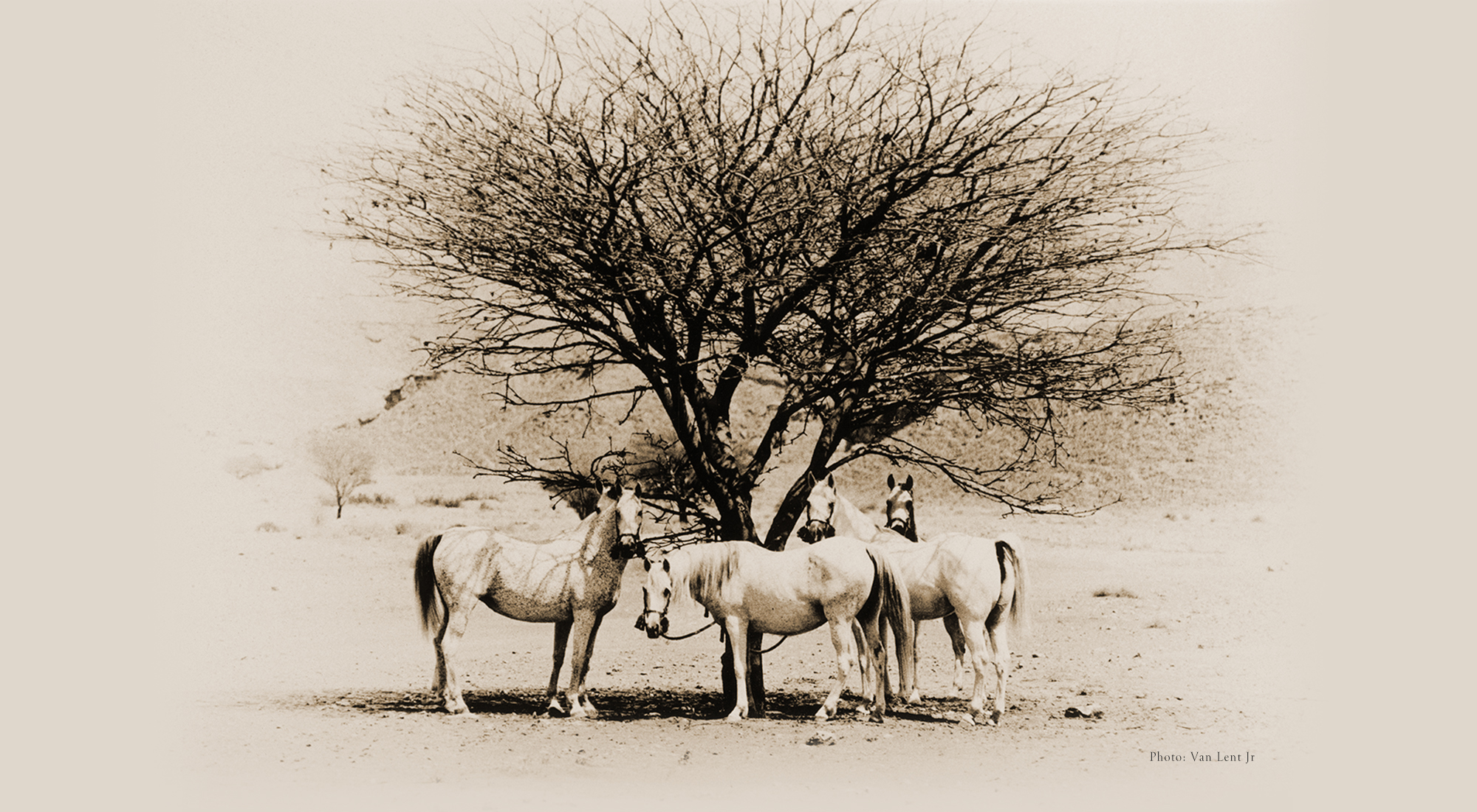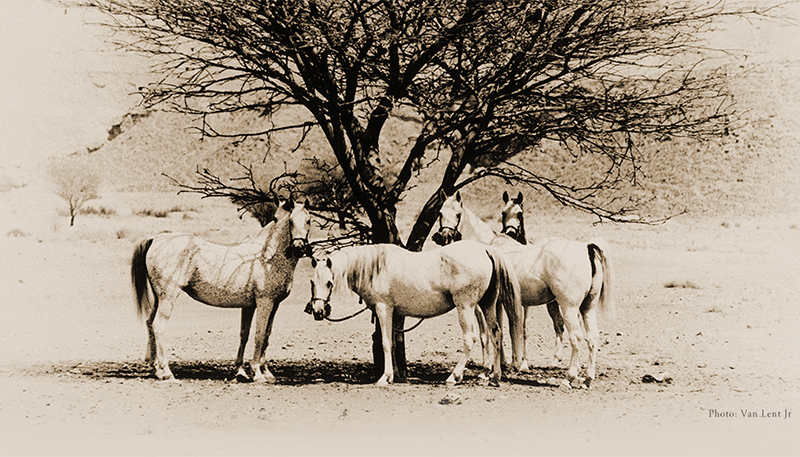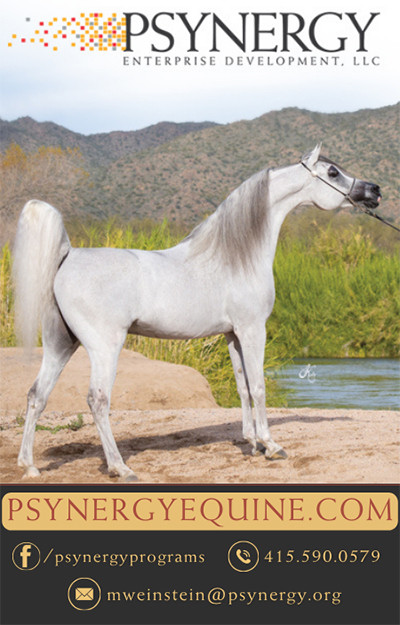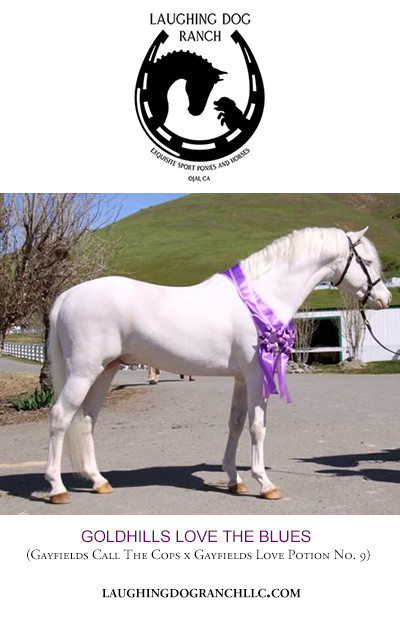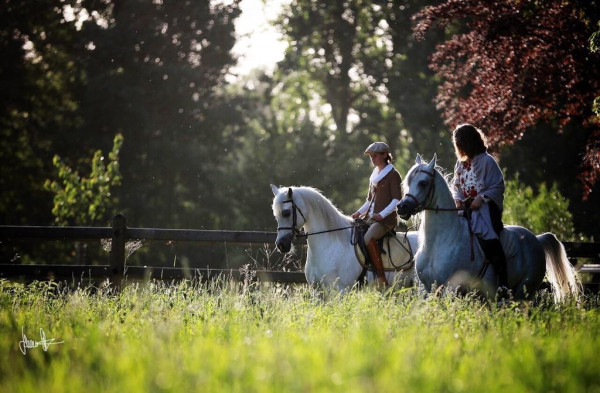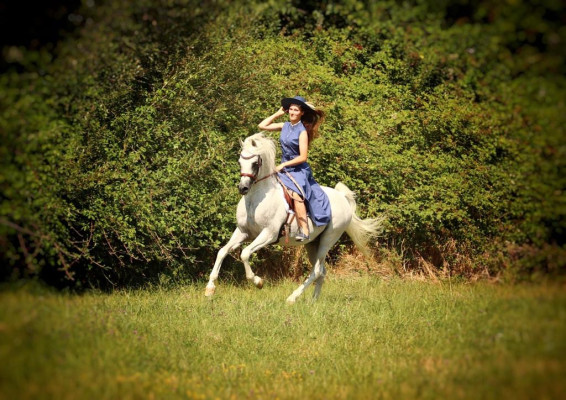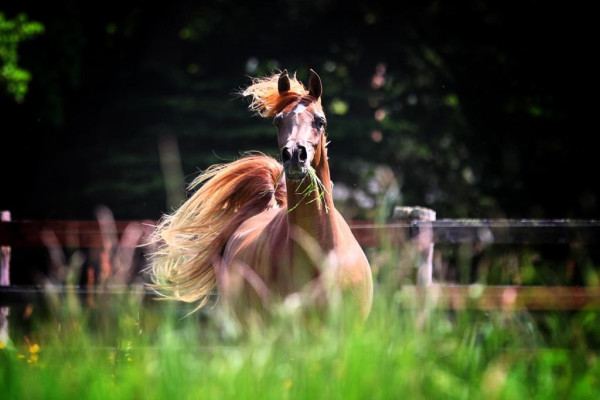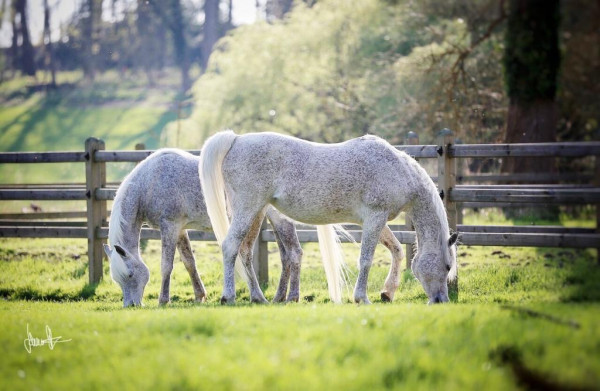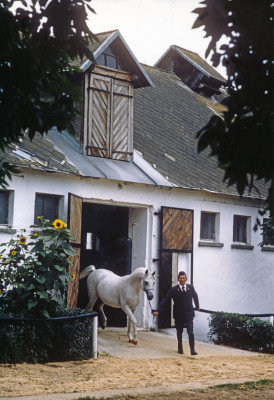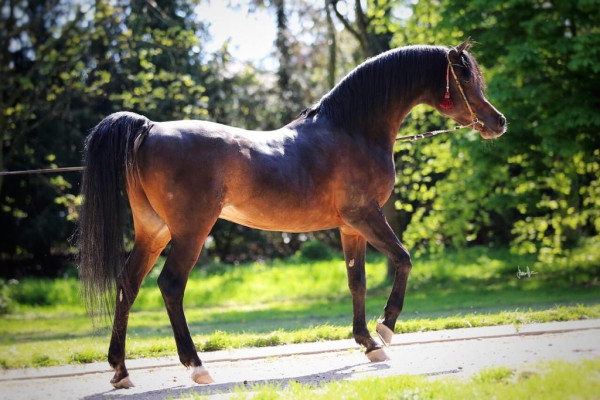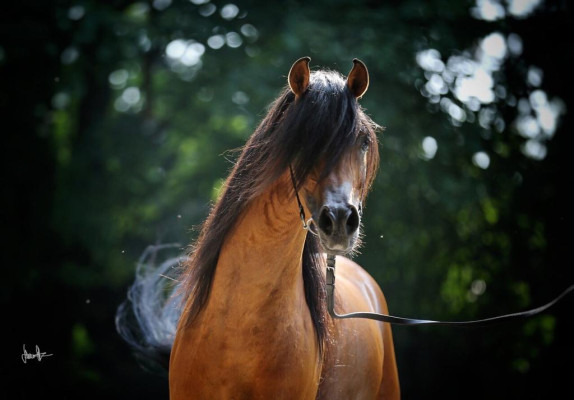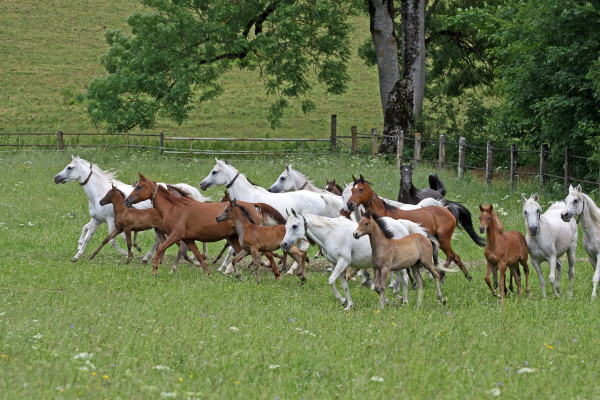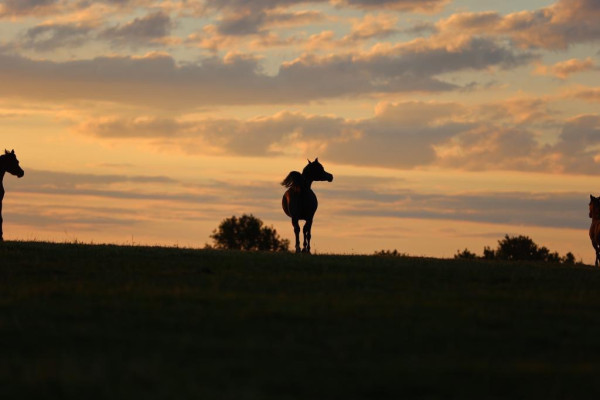Secrets of Doktryner
by Betty Finke
The stallion Doktryner was foaled in 1950, so you’d be justified asking why he should be of particular interest today. There are two reasons, however. One is that if you look closely, you find him in the pedigrees of an amazing number of very different breeds. The other is that only recently, genetic research revealed that his pedigree was not what we thought it was. It’s actually a lot more interesting.
Let’s start with context. Doktryner was a grey horse bred at Klemensow Stud in Poland. Most sources name Michalow Stud as his breeder, but Michalow was only founded in 1952, two years after his birth. All the Klemensow Arabians were eventually transferred there, so giving Michalow as his breeder is kind of a “shortcut” rather than a mistake.
Doktryner’s dam was Blaga, a mare from Bábolna State Stud, Hungary, that had ended up in Poland at the end of World War II after a detour via Germany. She acquired the name “Blaga” in Poland, where all the Bábolna mares were given names starting with B, but she was originally registered as 221 Kuhailan Zaid. A year after producing Doktryner, she was bred to Amurath Sahib and returned to Bábolna. There she gave birth to a daughter, 25 Amurath Sahib, who became a key mare in Bábolna breeding. She was the last purebred mare tracing to the original desert foundation of Bábolna, and the last to trace in all lines to the desert (before the arrival of the horses from Egypt).
According to his original registration, Doktryner was sired by Miecznik, a son of the hugely influential Fetysz, and founded one of the two major branches of the Ilderim sire line (the other being that of the Miecznik son Aquinor). Following a fairly successful, though not exceptional season at the racetrack,Doktryner became a sire at Michalow and was heavily used there. Many of his daughters became cornerstones of Polish breeding: Cedrela, Eufonia, Ferezja, Wieza, Gawra, Wadera, Manilla – to name just a few. His son Ferrum succeeded him at stud, but sired only daughters, so his male line quickly died out in Poland.
Several Doktryner sons were exported and became successful sires in other countries: most notably Gerwazy in Britain, Arbor in France, and *Muzulmanin in the U.S. along with Gerwazy’s son *Karadjordje. Although the male line eventually petered out in Britain and the U.S. as well, these horses appear in numerous pedigrees in indirect lines. Gerwazy, for instance, was the maternal grandsire of *Aladdinn.
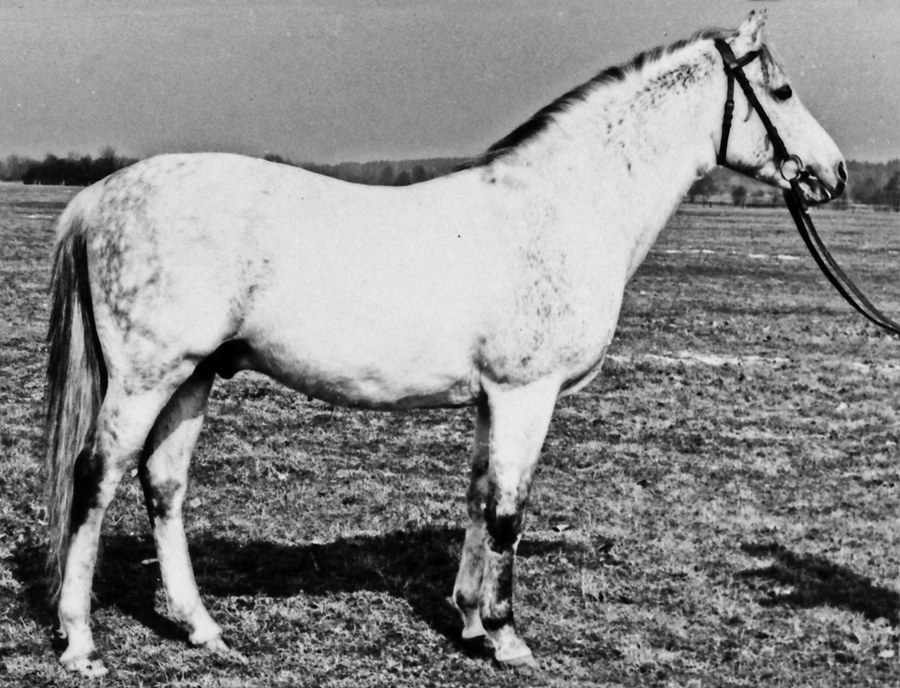 Doktryner, foaled in 1950 out of Blaga and (officially) by Miecznik.
Doktryner, foaled in 1950 out of Blaga and (officially) by Miecznik.
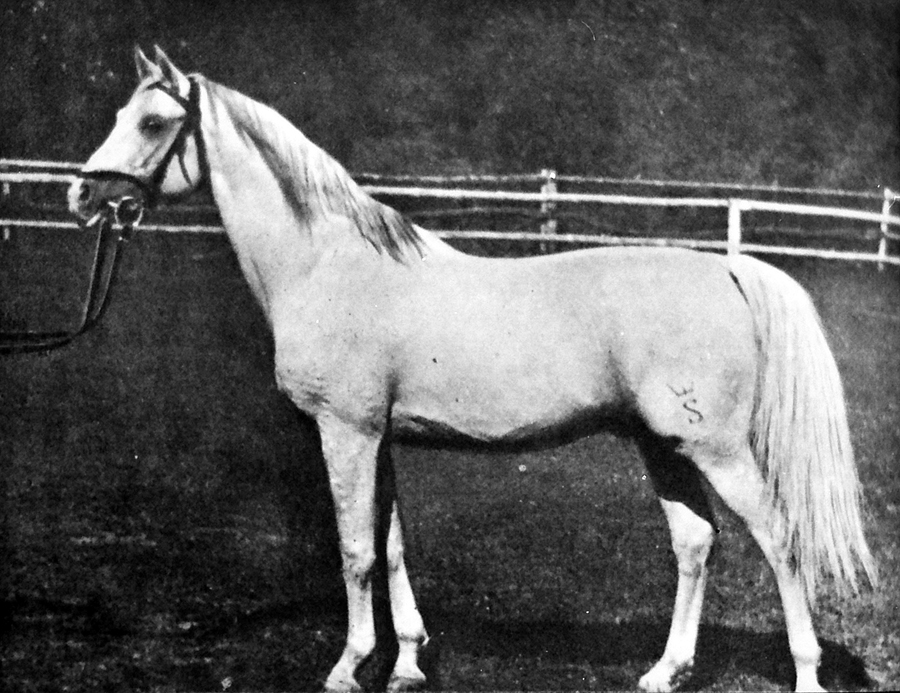 Amurath Sahib, revealed in 2022 to be Doktryner’s actual sire.
Amurath Sahib, revealed in 2022 to be Doktryner’s actual sire.
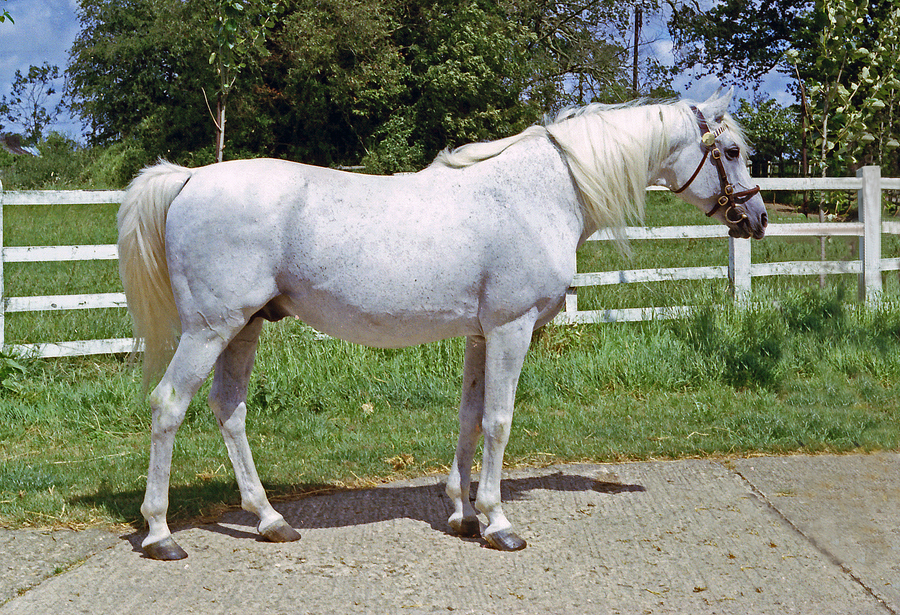 Gerwazy 1955 (Doktryner x Gwara), exp. to England.
Gerwazy 1955 (Doktryner x Gwara), exp. to England.
Two years ago, advances in genetic research made it possible to determine not only a horse’s dam line, but also his sire line, every line having its own distinct haplotype. To determine that of the Ilderim-Fetysz sire line, horses from three sources were tested: Polish Arabians tracing to Aquinor; Trakehners, where the Fetysz sire line is prominent; and Lewitzers, an East German breed of pinto ponies with a sire line to Doktryner through Gerwazy (we’ll get back to those later). Both the Polish Arabians and the Trakehners, descended from Aquinor, showed the identical haplotype, Ao-aA1a. But to everyone’s surprise the Lewitzers, descending from Doktryner, came up with something completely different: Ta-b. In other words: Gerwazy’s – and consequently Doktryner’s – sire line couldn’t be Ilderim. Something had gone wrong somewhere. But what, and where?
Fortunately, the available evidence made it easy enough to sort out. At the time Doktryner was bred, there were five stallions at Klemensow: Miecznik, Grand, Amurath Sahib, Wielki Szlem, and Werset, each representing a different sire line. To cut a long story short, the haplotype of one of these was a perfect match with Doktryner’s descendants: Amurath Sahib. While it is unlikely this will ever be changed in the official records, we may now safely assume that Doktryner was sired not by Miecznik, but by Amurath Sahib. And that is quite a significant discovery.
For one thing, it makes him a full brother to Bábolna’s great broodmare, 25 Amurath Sahib-2. It also makes him the last stallion born in Poland of 100% desert bloodlines. And of course, it makes him a member of the oldest Arabian sire line in the world, that of Bairactar, which has become very rare today. Unfortunately, the hope for an additional source of this sire line proved short-lived. Gerwazy’s line in Britain has died out, as has *Muzulmanin’s in the U.S. The last stallion of *Karadjordje’s line is (or was) Horizonne, foaled in 2008 in Canada, who has sired no purebred foals to date.
This is, of course, why the specimens used for testing Doktryner’s sire line were Lewitzers, not Arabians. And it is in fact a characteristic of Amurath Sahib’s line in Poland that these stallions sire many excellent mares, but only rarely a superior sire. It’s no wonder this line has become rare.
Sire line aside, Doktryner has been a major influence in the Arabian breed both through his own daughters, true cornerstones of the Polish state studs, and through his sons’ daughters. And that’s not all. His sire line, as I have already mentioned, still continues in the Lewitzer pony breed, but not just there, either. Doktryner’s blood is found in numerous other breeds of horses and ponies around the globe, including some where you’d never expect it.
For the following observations, I am indebted to my friend and fellow-researcher Birgit van Hasz. While examining Doktryner’s influence in the Trakehner breed, she became aware of just how far his blood extends in horse breeding. She began to dig deeper, and all credit for the following research goes to her.
Let’s start with the obvious: the Polish Anglo-Arabian and Malopolska breeds. Doktryner’s daughter Garsonka was the dam of the stallion Garwolin (by Palas), who was exported to the Netherlands. Before departing for Holland, he had sired several Anglo-Arabian stallions in Poland including Lirnik, whose line is still active in the Malopolska and Wielkopolska breeds. These are what you may term Polish Warmblood horses, but some of them also qualify as Trakehners and Anglo-Arabians. The Doktryner daughter Arkoza also established a dam line in Polish Anglo-Arab breeding which still continues today.
As unlikely as it may sound, Garwolin’s blood is also found in Silesian heavy Warmblood horses, by way of his son Lider and Lider’s son Lawin.
In the Netherlands, Garwolin sired the Half-Arabian Warmblood stallion Genesis, who is approved for Dutch sports horse breeding.
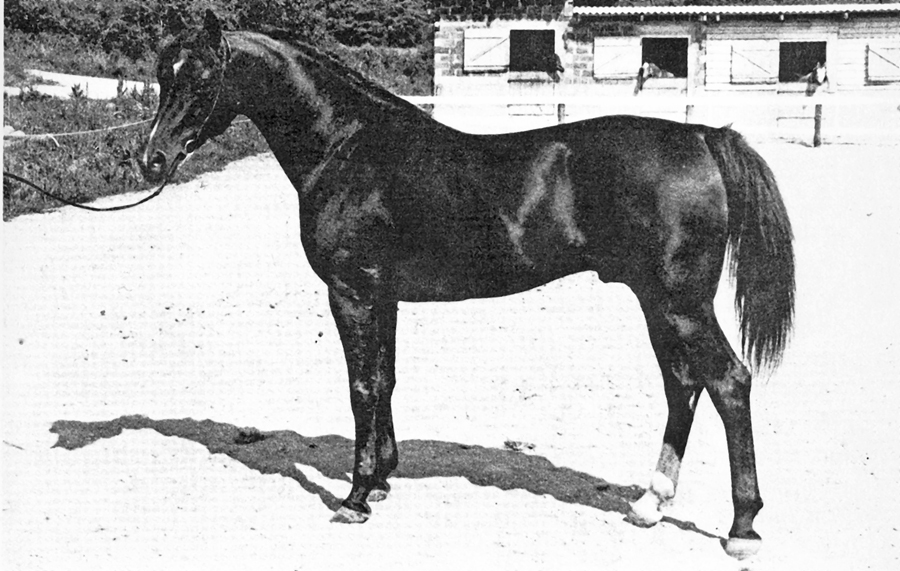 Arbor 1967 (Doktryer x Arba) exp. to France.
Arbor 1967 (Doktryer x Arba) exp. to France.
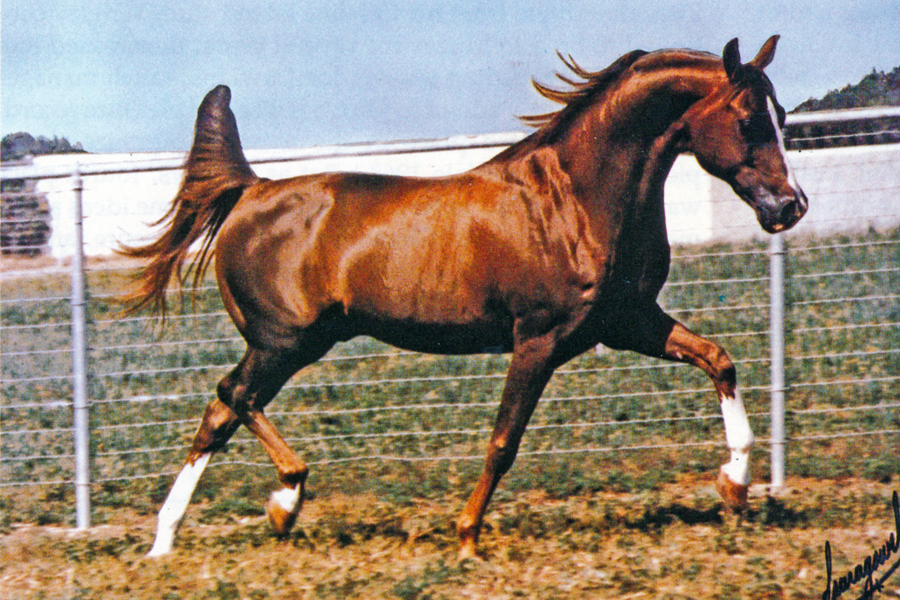 Muzulmanin 1957 (Doktryner x Mufta), exp. to USA.
Muzulmanin 1957 (Doktryner x Mufta), exp. to USA.
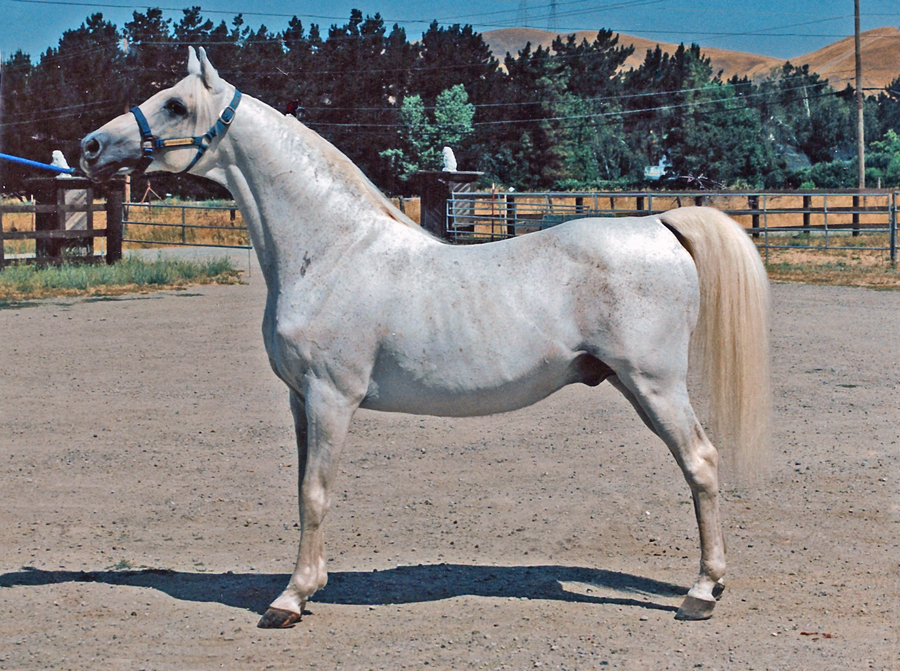 Karadjordje 1965 (Gerwazy x Karramba), exp. to USA
Karadjordje 1965 (Gerwazy x Karramba), exp. to USA
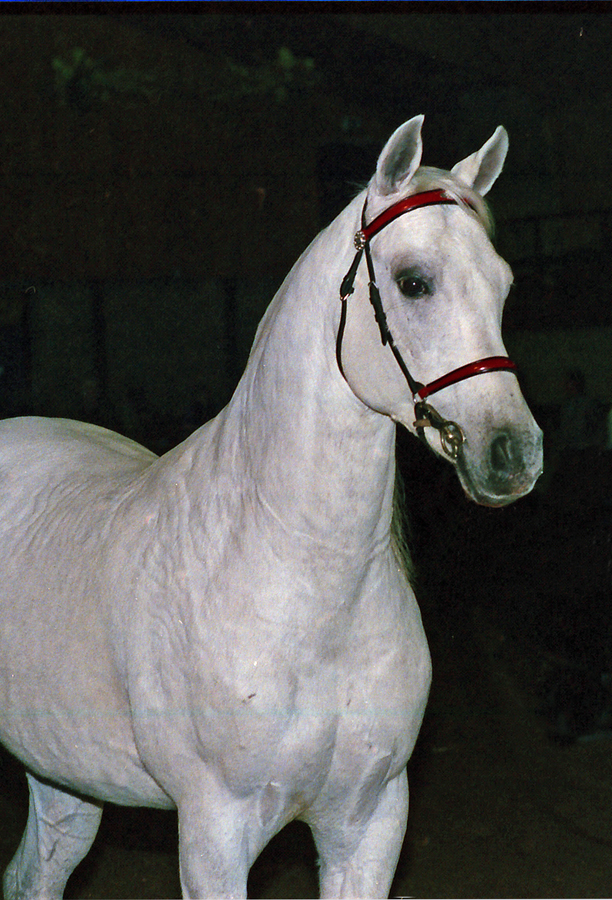 Garwolin 1976 (Palas x Garsonka by Doktryner), exp. to Holland.
Garwolin 1976 (Palas x Garsonka by Doktryner), exp. to Holland.
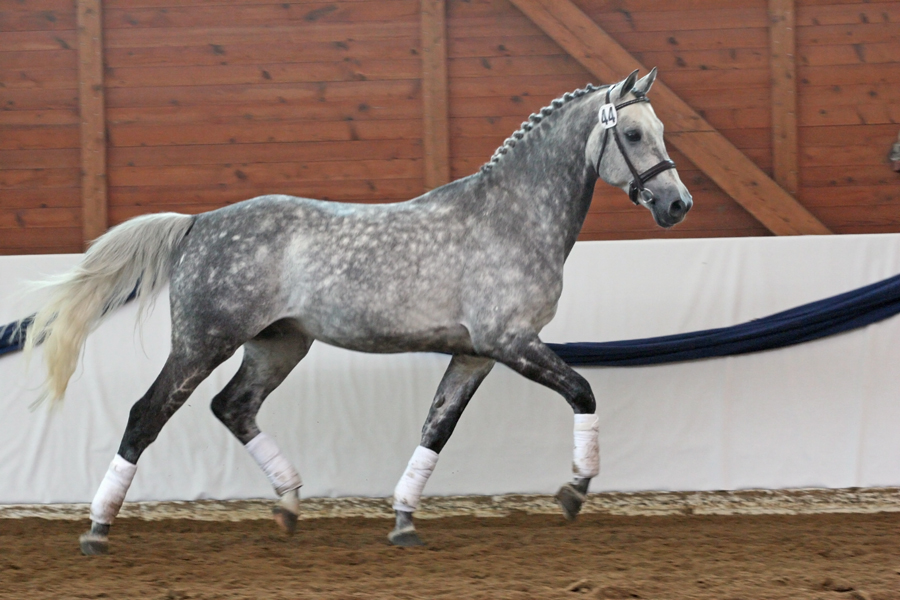 Genesis (Garwolin x Pandora), 2001 Dutch Half-Arabian Warmblood stallion.
Genesis (Garwolin x Pandora), 2001 Dutch Half-Arabian Warmblood stallion.
From 1958-1964, Doktryner was leased to the Swiss national stud Avenches, where he was used as sire for a native Swiss breed, the Freiberger. This was originally a type of small draft horse, and at the time the breeders were trying to “modernize” the breed, i.e. make them suitable for a market that increasingly demanded horses for riding rather than for agricultural work. Freibergers being traditionally chestnut or bay, a grey stallion seems to be a rather odd choice, but Doktryner, along with a Shagya-Arabian stallion, was selected for the experiment and allotted 30 Freiberger mares. Among the resulting offspring were five stallions that were used for breeding, of which one, Don Pablo, succeeded in establishing a sire line in the breed. As of 2020, 11 stallions of this line were still active.
In his book “Pferdezucht in der Schweiz” (Horse Breeding in Switzerland), E. Weiland sums up Doktryner’s contribution: “Doktryner sired horses that were sweet-natured, spirited but easy to handle, with great stamina. In addition, his get have a natural aptitude for flying changes. Unfortunately they all have bad backs, low-slung necks and flat withers. However, these are faults also found in Freibergers, and for that reason Doktryner was returned to Poland in 1964.”
At Avenches, Doktryner also covered some Swiss Warmblood mares. Two of his Warmblood daughters, Denise and Dolores, became broodmares and are still found in pedigrees today, including those of international eventers.
Also while in Switzerland, Doktryner covered a Trakehner mare who, in 1961, foaled a daughter named Parole. Parole, who looked every inch an Arabian, became an important mare in Trakehner breeding. Her influence has usually been summed up under that of Fetysz, who was at the time believed to be Doktryner’s grandsire. But as we now know this is not the case, and Parole’s achievements have to be viewed by themselves.
Parole produced several daughters, of which Polaris IV is the 3rd dam of the Trakehner show jumper and active sire, Phlox. Parole was best known for producing the stallion Primo, whose sire Pregel descended from Fetysz through his dam, giving Primo another dose of Arabian blood (which showed). While Primo sired only one approved son, he had numerous daughters and his descendants can be found all across the world. There are now Trakehners tracing to Primo not only in Germany, but also in Poland, Bulgaria, the USA, Canada, and even Australia.
The German-bred Trakehner stallion Machandel, who is descended from Primo through his dam, was exported to Poland, where he not only sired Trakehners, but also Wielkopolska horses.
Parole produced another stallion of note, Polarwind, whose blood is found not only in the Trakehner breed, but also in Austrian and Swedish warmblood horses. Polarwind’s Trakehner sons Mandinka and Marcus were imported to the USA and have descendants there. There’s also a line to Primo in American Trakehners through the imported Primo daughter Keno, whose great-grandson Liebreiz inherited the grey color as well as the Arabian look that often goes with it.
There is another, more unusual source of Doktryner blood in American Trakehners: the buckskin Anglo-Arabian mare Glitters Dream Girl, who traces to the Doktryner daughter Ferezja in tail female line. She has produced several buckskin Trakehners, including the prizewinning mare Garbo (2007 by Horalas) and the approved stallion Grand Marnier (2012 by Steinburg). Aside from their unique bloodlines, these are the only buckskin Trakehners currently breeding.
As already mentioned above, the wrong assignment of Doktryner to the Ilderim sire line was discovered by testing horses of the Lewitzer breed. This breed of riding ponies originated in the former German Democratic Republic and was first established in the late 1960s by crossing Arabians and Trakehners with local pony mares. There were not many Arabians in the GDR, and of the few there were, the majority were pure Polish. One of them was the stallion Polish Lancer (Gerwazy x Lafirynda), bred by Patricia Lindsay in England. Polish Lancer’s son Gharib Ben Lancer sired the Lewitzer stallion Graveur, foaled in 1983, who became one of the most significant sires of the breed and established its largest sire line.
Originally known as “Lewitzer Pintos” – they are always parti-colored – and later as “Lewitzers,” this breed twice came close to extinction: once when the East German government decided to let the breed die out in favor of Haflingers, and again when, following the reunification of Germany, they were scheduled to be absorbed into the German Riding Pony breed. In both cases, however, the Lewitzer breeders refused to submit to their fate and won. The Lewitzer was given official breed status in 2001, and its strongest line is that of Graveur, tracing to Doktryner.
While we’re on the subject of ponies, there are another five pony breeds that have Doktryner blood in them. One of them is Poland’s Felinski, or Felin Pony, a relatively new breed created by crossing native Koniks with other pony breeds and Arabians. A strong Arabian component came through the Arab-Konik stallion Cedr, who was out of the Doktryner daughter Cedrela. Cedr sired the Felin stallion Grafit, foaled in 1988, who in turn sired the 2009 stallion Tel Aviw, a popular sire in the breed.
In France, there is a line to Doktryner through his son Arbor in the Pony Francais de Selle, or French Sports Pony. Arbor’s purebred son Adoro Al Maury sired the pony stallion Selim De Siam, who is found in many pedigrees today mostly through his daughters. His daughter Klava Love De Ce is the dam of two popular breeding stallions.
In Britain, Gerwazy sired the Welsh partbred stallion Seaholm Fairy Silver, whose influence extends to Denmark and to the Scandinavian Sports Pony. Two other British-bred Doktryner descendants have had an impact on the breed, especially in Denmark: the purebred stallions Danzig (Kossak x Danuta by Gerwazy) and Treeyews Santiago (out of Barcelona by Doktryner). Another line to Gerwazy is found in the British Spotted Pony through the stallion Legend of Europe.
While it is hardly surprising to find Doktryner in the pedigrees of Arabian-based breeds like the Shagya-Arabian, the National Show Horse, and the Pintabian, he also turns up – if in isolated cases – in less likely breeds like the Appaloosa. The 1993 Appaloosa stallion His Mir Image is out of the purebred mare A Mir Dream, whose sire was out of the Gerwazy daughter Lalage. This stallion is a National and Regional Champion Sports Horse Champion and dressage winner and has won awards both as an Appaloosa and as a Half-Arabian. There are also some Appaloosa sporthorses out of the buckskin Trakehner mare, Garbo, descended from the Doktryner daughter Ferezja in tail female line.
You can find Doktryner in still more pedigrees, including a Hanoverian in the U.S. and an Arab-Frisian in Scandinavia. But those are isolated cases and hardly comparable to the Malopolska, Trakehner, Freiberger, Lewitzer, or Felin breeds, where Doktryner is very much a part of the genetic make-up. And that’s a list including Warmbloods, draft horses, and ponies! Perhaps it isn’t all that unique, once you look closely. Someone would have to do a similar research project for another stallion to find that out. But it bears witness not only to the impact of one particular stallion, but to the enduring influence of Arabian blood in the equine world.
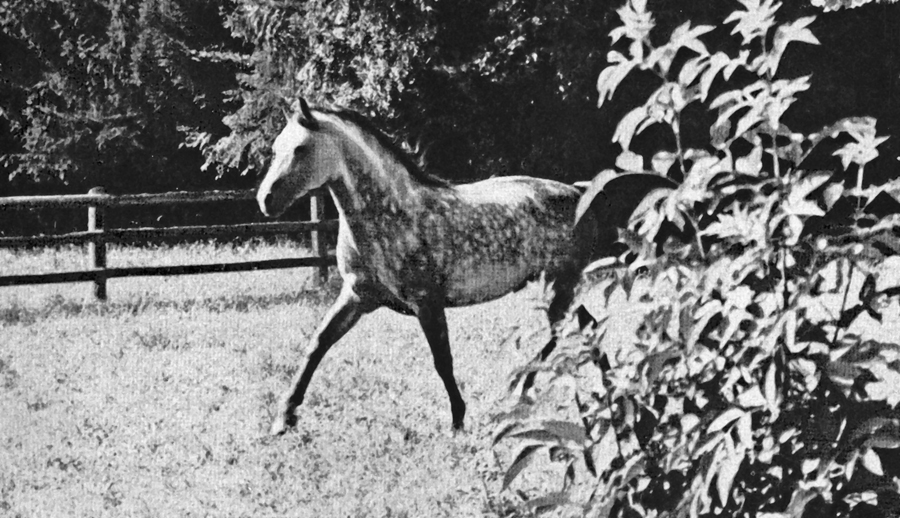 A rare photo of Doktryner at Avenches in Switzerland.
A rare photo of Doktryner at Avenches in Switzerland.
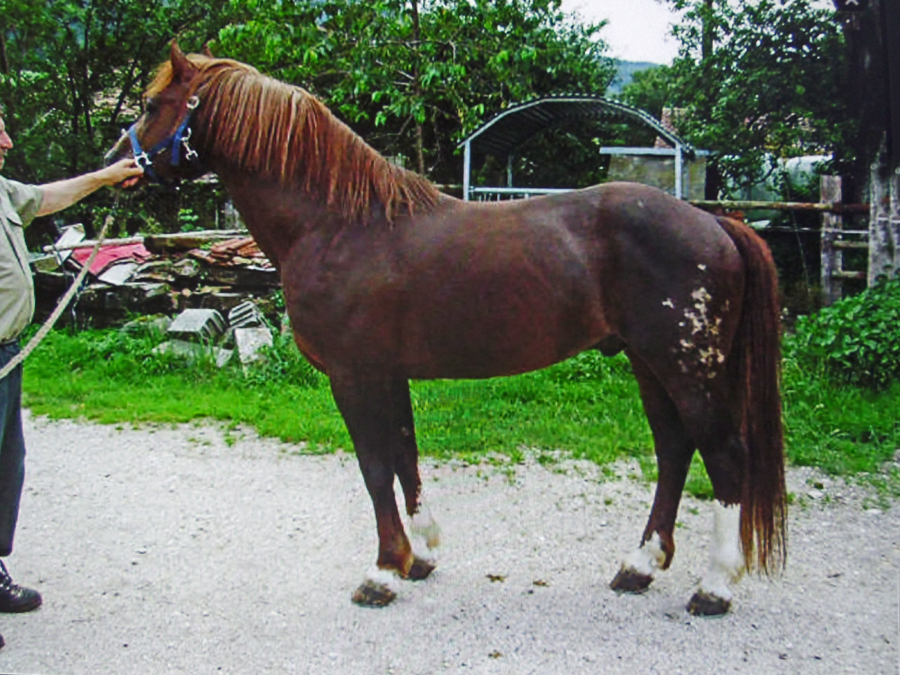 Don Flamingo (Don Fernando x Ostara), 1992 Freiberger stallion of the Doktryner male line.
Don Flamingo (Don Fernando x Ostara), 1992 Freiberger stallion of the Doktryner male line.
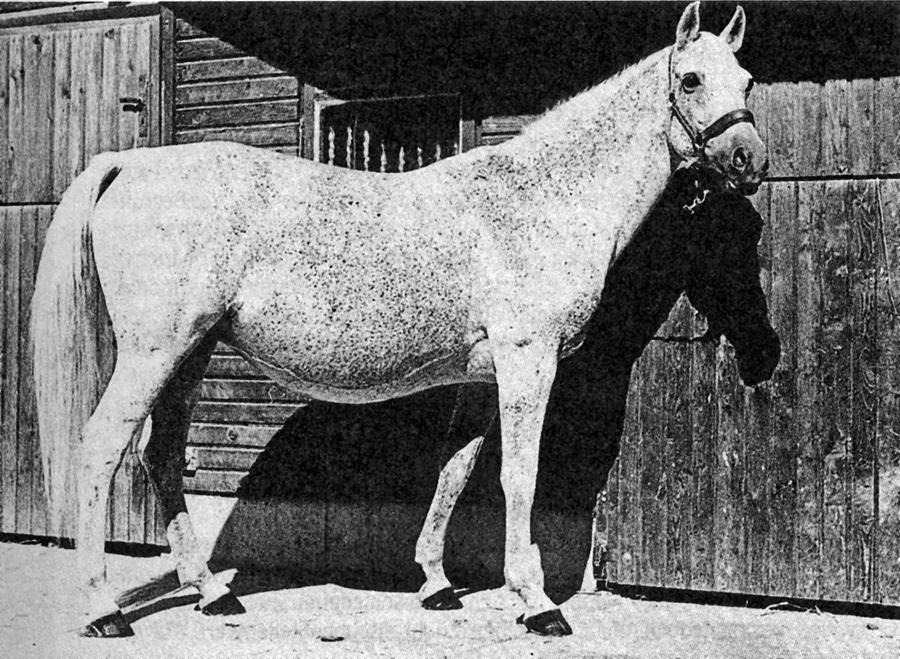 Parole (Doktryner x Polarlicht), 1961 Trakehner mare.
Parole (Doktryner x Polarlicht), 1961 Trakehner mare.
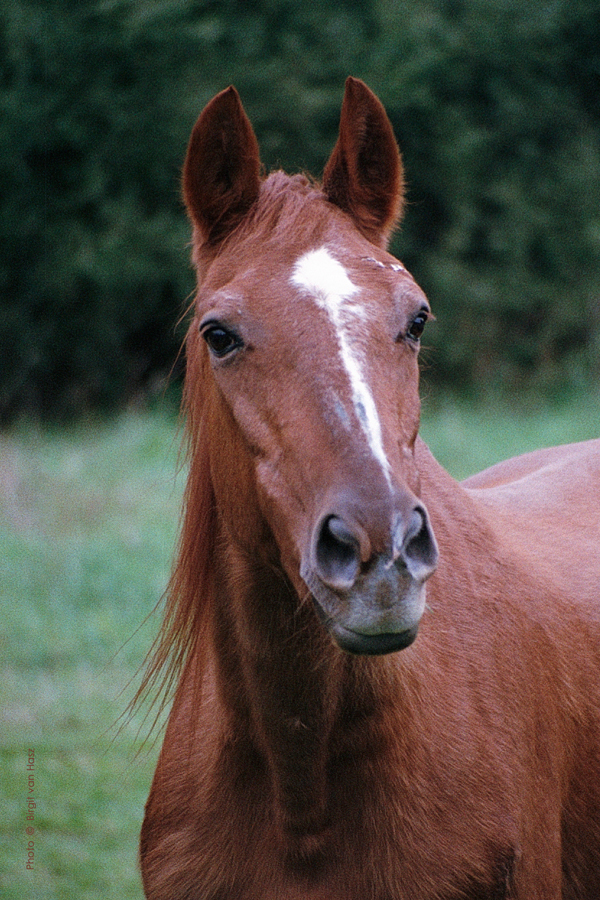 Polargold (Unesco x Parole by Doktryner), 1979 Trakehner mare shown at age 36. Van Hasz photo.
Polargold (Unesco x Parole by Doktryner), 1979 Trakehner mare shown at age 36. Van Hasz photo.
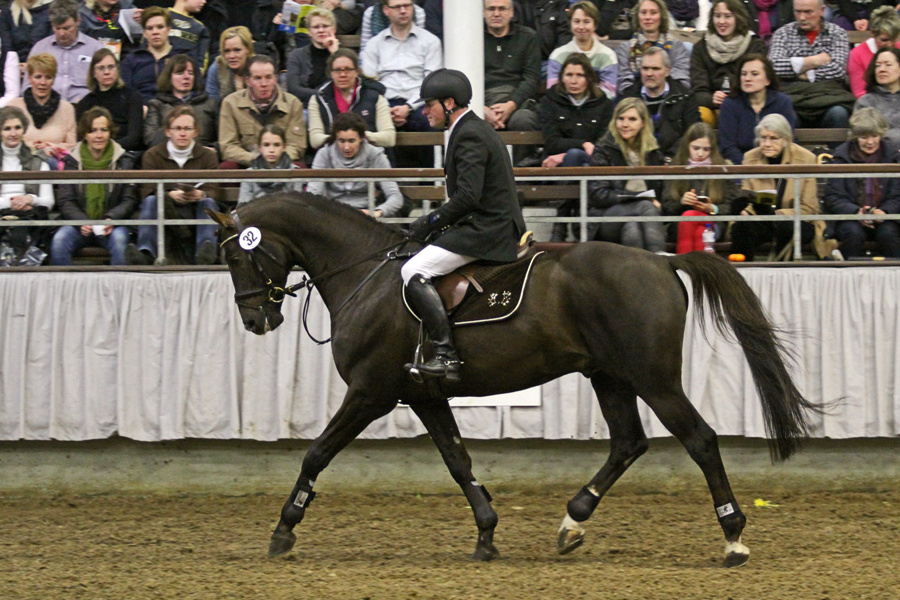 Phlox (Waitaki x Polarissima), 2005 Trakehner stallion descended from Parole in tail female line.
Phlox (Waitaki x Polarissima), 2005 Trakehner stallion descended from Parole in tail female line.
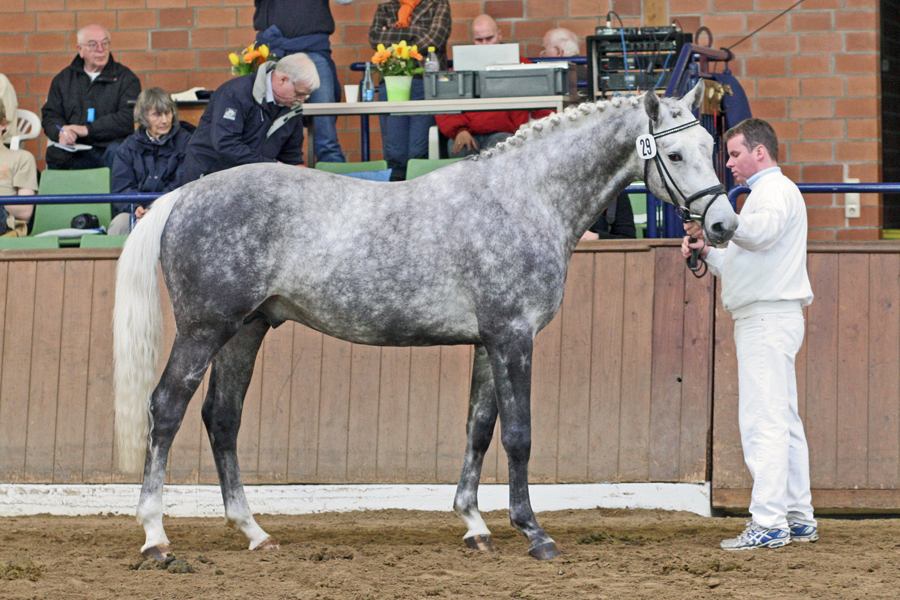 B. B. King (Best Before Midnight x Bella Marjell by Machandel), 2007 Trakehner stallion tracing to Primo-Parole through his dam.
B. B. King (Best Before Midnight x Bella Marjell by Machandel), 2007 Trakehner stallion tracing to Primo-Parole through his dam.
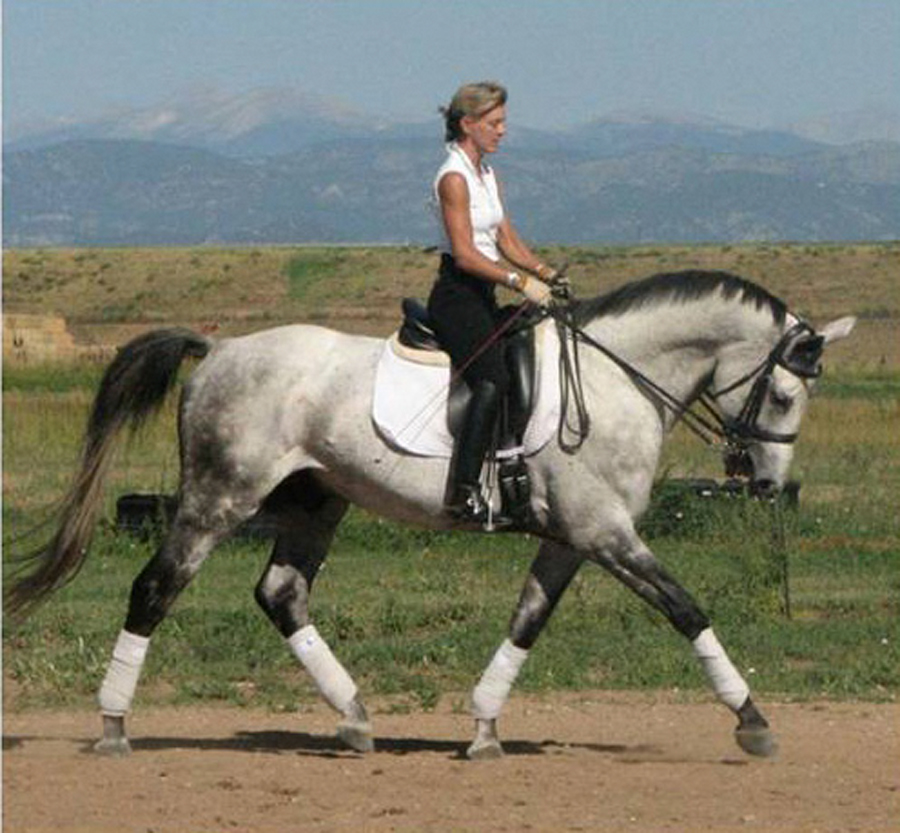 Liebreiz (Krusader x Leisure Lass), 1996 U.S. Trakehner stallion tracing to Primo-Parole through his maternal granddam.
Liebreiz (Krusader x Leisure Lass), 1996 U.S. Trakehner stallion tracing to Primo-Parole through his maternal granddam.
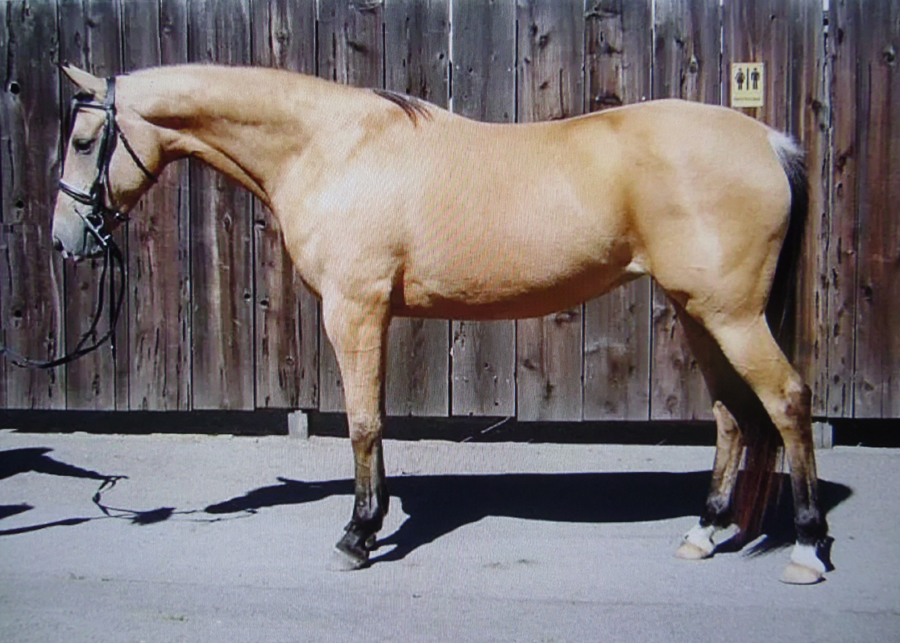 Glitters Dream Girl 2002 (Mister Glitter/TB x Fayrooza), 2002 buckskin Anglo-Arabian mare tracing to the Doktryner daughter Ferezja through her dam. She has both Trakehner and Appaloosa Sports Horse descendants.
Glitters Dream Girl 2002 (Mister Glitter/TB x Fayrooza), 2002 buckskin Anglo-Arabian mare tracing to the Doktryner daughter Ferezja through her dam. She has both Trakehner and Appaloosa Sports Horse descendants.
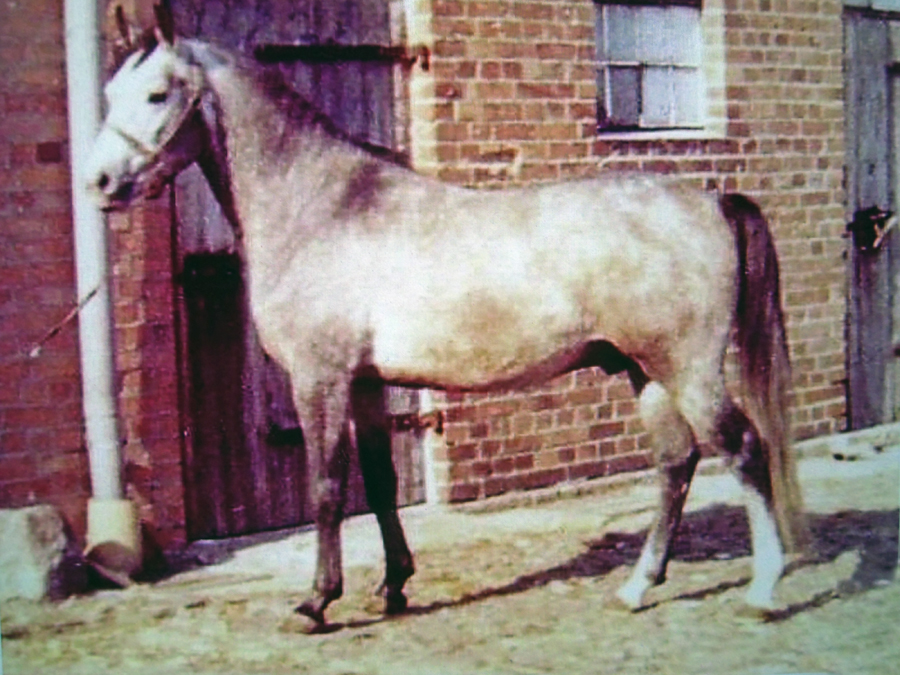 Gharib Ben Lancer 1978 (Polish Lancer x Granada), Gerwazy grandson and a foundation sire for the Lewitzer breed.
Gharib Ben Lancer 1978 (Polish Lancer x Granada), Gerwazy grandson and a foundation sire for the Lewitzer breed.
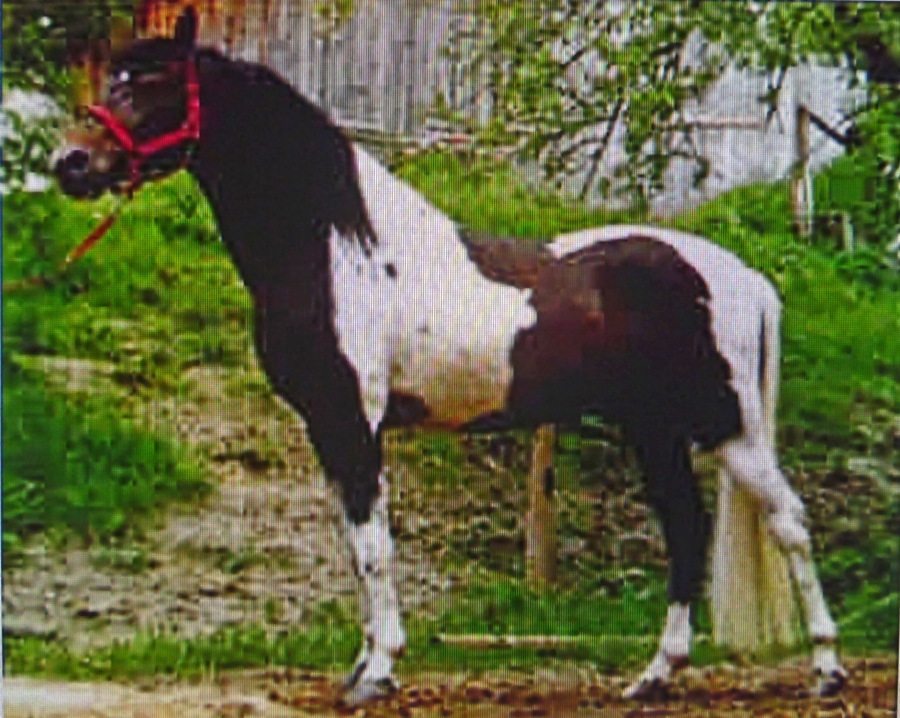 Graveur (Gharib Ben Lancer x Leila BV), 1983 Half-Arabian Lewitzer stallion.
Graveur (Gharib Ben Lancer x Leila BV), 1983 Half-Arabian Lewitzer stallion.
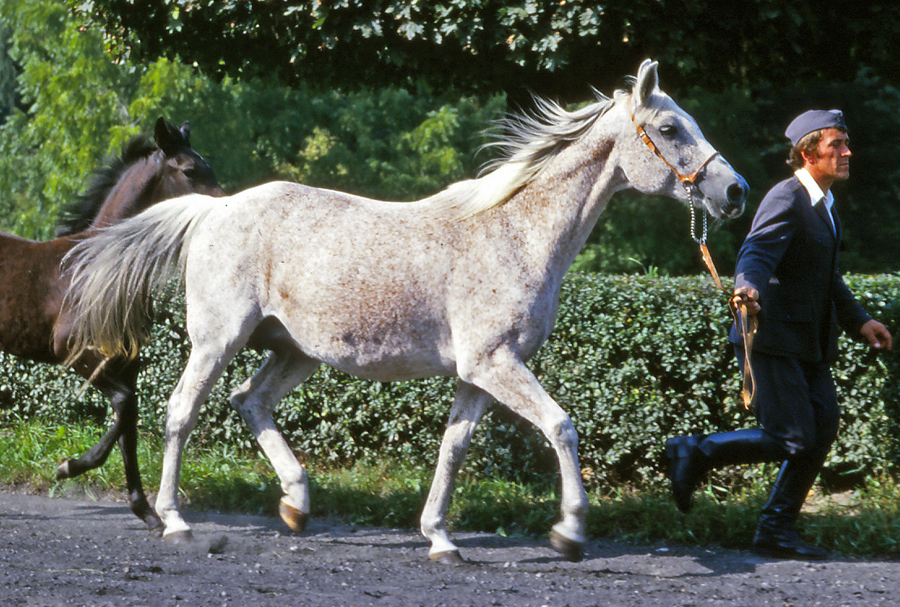 Cedrela 1966 (Doktryner x Celia), dam of the Arabo-Konik stallion and foundation sire of the Felin pony breed, Cedr.
Cedrela 1966 (Doktryner x Celia), dam of the Arabo-Konik stallion and foundation sire of the Felin pony breed, Cedr.
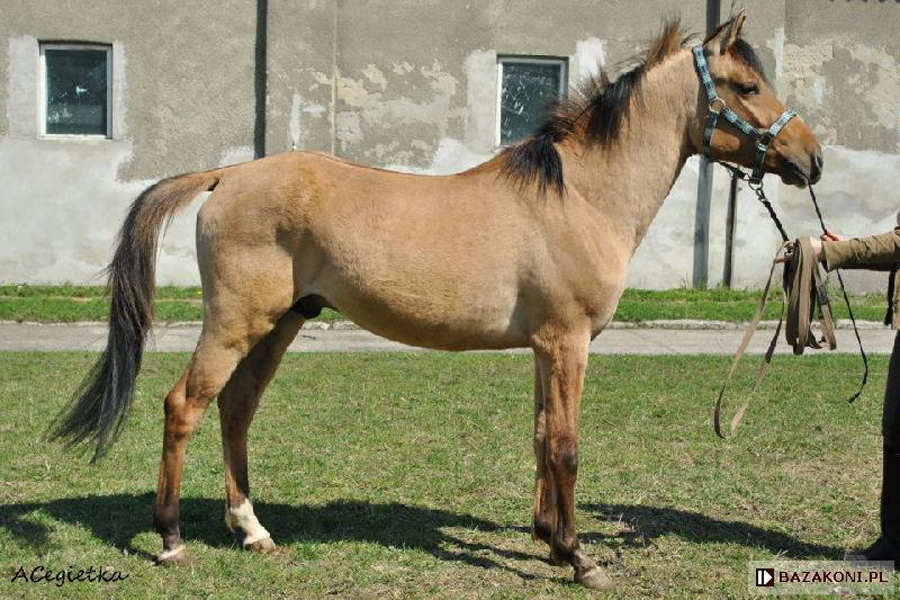 Tel Awiv (Grafit x Tereska), 2009 Felin Pony stallion, maternal grandson of Cedr.
Tel Awiv (Grafit x Tereska), 2009 Felin Pony stallion, maternal grandson of Cedr.
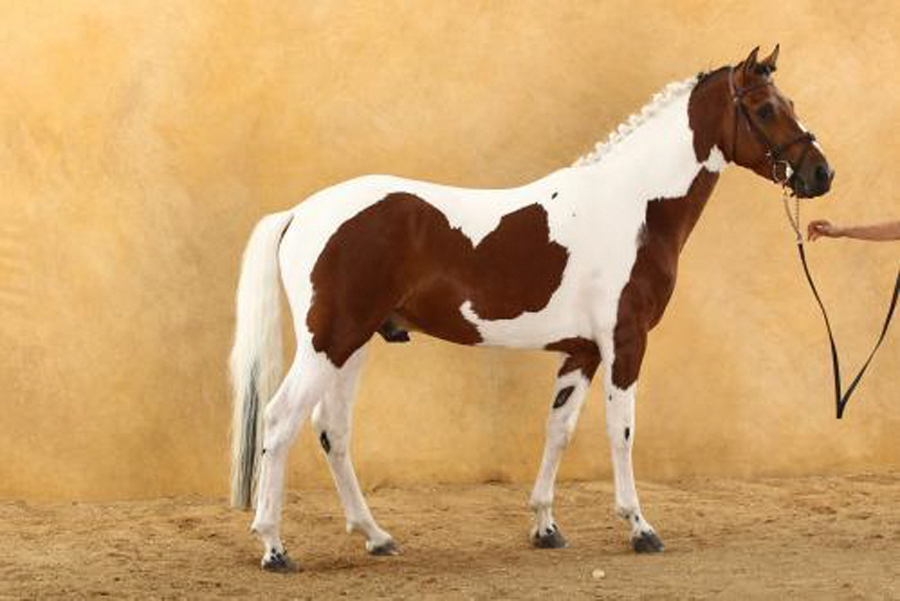 Alisco du Roquet, 2010 French Sports Pony stallion. His dam Klara Love de Ce is by the Arbor grandson Selim de Siam.
Alisco du Roquet, 2010 French Sports Pony stallion. His dam Klara Love de Ce is by the Arbor grandson Selim de Siam.
 His Mir Image (Jokers Measelyone x A Mir Dream), 1993 Half-Arabian Appaloosa stallion tracing to Gerwazy-Doktryner through his dam.
His Mir Image (Jokers Measelyone x A Mir Dream), 1993 Half-Arabian Appaloosa stallion tracing to Gerwazy-Doktryner through his dam.


